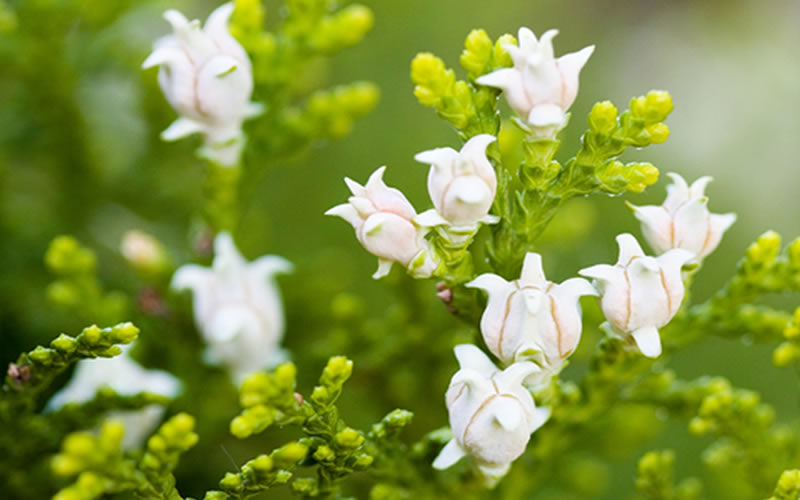The Arizona Cypress, or Cupressus arizonica, is popular because it can be planted in any type of soil, is very low maintenance, and can withstand any weather conditions. It is a drought resistant conifer that grows best in full sun at elevations under 3,000 feet and in hot dry climates or Hardiness Zones 6-9.
This tree grows naturally on rocky mountain slopes but does better in irrigated soil. It is often cultivated as an ornamental tree.

Appearance
The Arizona Cypress tree has a naturally beautiful shape and is wonderful as a hedge, privacy screen or property divider because of its tiny but very dense leaves. It grows in a pyramid or steeple shape and is often used as a Christmas tree. The average height of the Arizona Cypress is between 30 and 60 feet, but it can grow up to 90 feet tall. Its width is usually 10 to 20 feet.
Also known as the Blue Cypress or Blue Sapphire because of its blue-green almost silvery foliage, it is the only cypress native to the southwestern United States. The tree reveals tiny yellow flowers in the fall. Most impressively, the Blue Sapphire Cypress is considered the most drought resistant evergreen in existence.
The Arizona Cypress is a low maintenance tree that is well suited as either an accent tree or for serving a specific purpose like a privacy screen or property divider.
Varieties
The Arizona Cypress has two popular varieties, the Blue Ice Cypress and the Carolina Sapphire. They both have the same conical shape and attractive reddish purple bark. The Caroline Sapphire grows much faster, adding about 12-32 inches per year. On the other hand, the Blue Ice grows more moderately at about 10-18 inches a year, resulting in a slightly smaller tree over time. The Carolina Sapphire is a true blue color, sometimes almost teal, while the Blue Ice is more silvery with a waxy coating. Both trees have very aromatic needles.
Potential Threats
The Arizona Cypress has few natural enemies, but you will want to look out for tiny brown cypress bark beetles and be cure to cut away any affected branches so they don’t infest the trunk. This tree is much more resistant to cypress canker than the Monterey Cypress, so it is very popular where that disease is prevalent.
